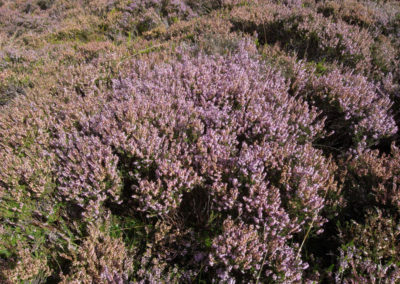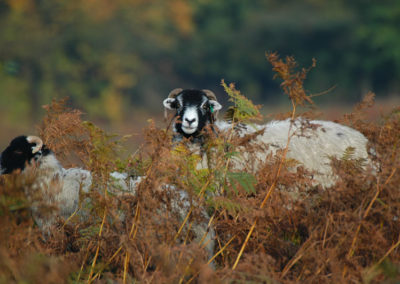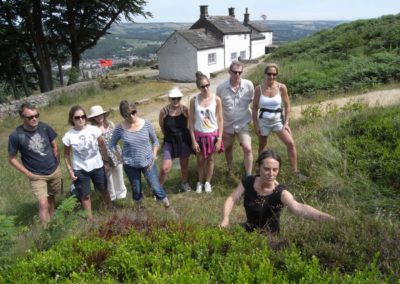
Conservation
Ilkley moor is a special place for many reasons. Although just a small part of the more extensive south Pennine moors, its position close to Ilkley town and attractive north facing landscape make it a major visitor attraction and recreational resource.
What may not be obvious to many visitors is the moor’s very significant nature conservation and historical interest. Although commonplace in northern England, heather moorlands of the type found on the moor are internationally rare. It is not only the vegetation of the moor that is important but also the bird species, particularly upland waders, which use the moor to nest and raise their young.
For these reasons the moor is designated as a national Site of Special Scientific Interest (SSSI). It also forms part of the South Pennine Moors Special Protection Area (SPA) designated under the European Union Bird’s Directive for its internationally important bird habitats.
There is also growing awareness of the importance of blanket mires and peaty soils, such as are found on the moor, for both locking in and storing carbon. It is estimated that there is twice as much carbon stored in Britain’s soils as there is in its woodlands.
The rich evidence of pre-historic settlement on the moor is recognised by the number of carved stones designated as national Scheduled Ancient Monuments (SAMs). Ilkley’s importance as a Victorian spa town can still be seen and appreciated in the walkways, pavilions, and tarns that are found on the moor, close to the town.
There is therefore much to conserve on the moor – its soils, vegetation, historical features and general landscape. Almost everything on the moor has been either created or influenced by human activity. Conservation of these valued features is not usually about ‘leaving them alone.’ It involves active management to either maintain or improve them. If all the vegetation was not grazed or, in the case of heather burned, it would become rank, lose its species diversity and be more susceptible to wild fires that can destroy the wildlife and the peat soils. Some controlled heather burning is beneficial as different age stands of heather broadens the bird habitat, provides young heather shoots which are the main food source for red grouse, and the burnt areas can act as fire breaks.
Features or sites of archaeological interest can become overgrown. Some times this can be to their benefit as they become unseen and are therefore less likely to be vandalised. However, plant roots, particularly of trees and bracken or the burrows of animals can cause considerable damage.
Many people have an active interest in the moor as it may help provide their income, for example from sheep grazing or tourism. Visiting the moor can contribute to people’s health and well being through the recreational opportunities it provides.
Conserving the moor for the benefit of everyone can be a difficult balancing act. As owners of the moor, Bradford Metropolitan District Council has both national and international responsibilities to maintain the nature conservation and archaeological value of the moor. They also have a duty to encourage public access and enhance peoples understanding and enjoyment of this marvellous facility.
Conservation can be as much about raising public awareness as the active management of the land. People and, especially their dogs can disturb ground nesting birds or their chicks. Camp fires and carelessly discarded cigarette buts can start wildfires. The worrying of sheep by dogs or gates left open can discourage farmers from grazing sheep on the moor.
Badly worn footpaths on the moor can act as small watercourses. These erode the paths further and wash soil into the river Wharfe and its tributaries where it can clog the gravels that are important fish spawning beds. The more popular archaeological sites could be damaged by erosion if public access to not planned and controlled. To maintain and enhance the wetland areas of the moor that are important habitats and carbon stores it may be necessary to block existing drains to help maintain or raise the water table. This may make areas of the moor less accessible to walkers.
Conservation is often a compromise between various interests. For instance, it may involve the building of structures such as board walks, stone-flagged or smoothed gravel paths that, to some may be intrusive to the moorland landscape. These however can aid moorland conservation and enjoyment by help channel walkers and preventing wider damage to soils and vegetation, keeping walkers’ feet dry and allowing better access for wheelchairs and the infirm.



